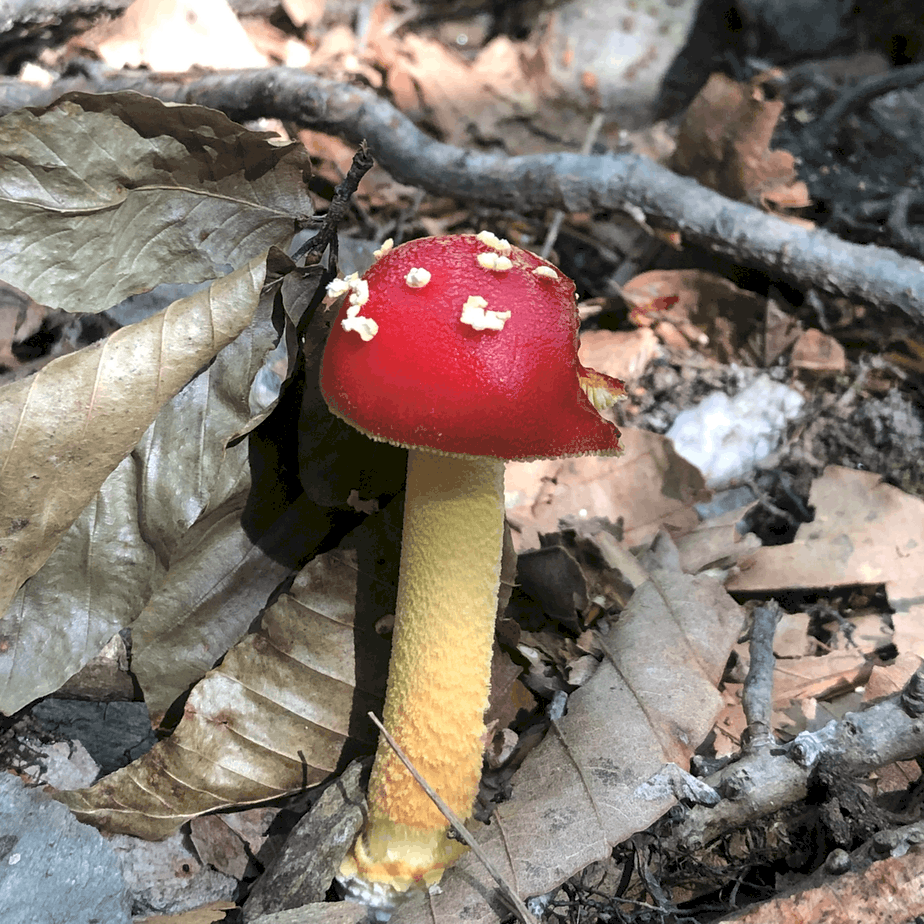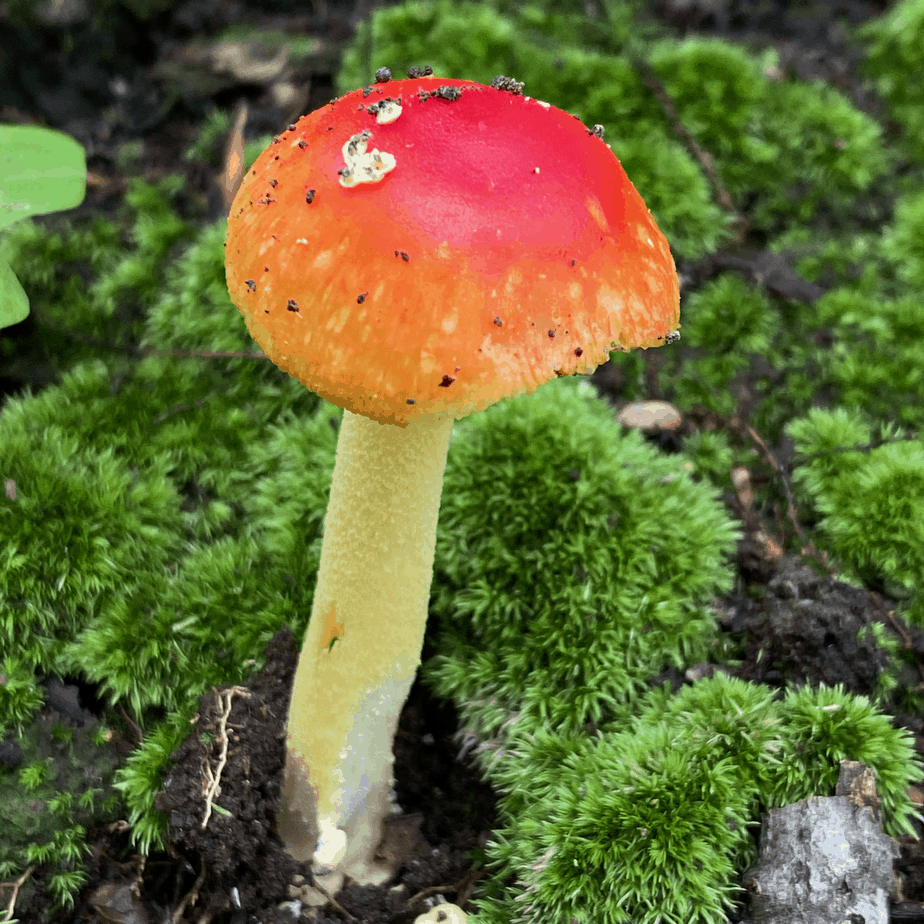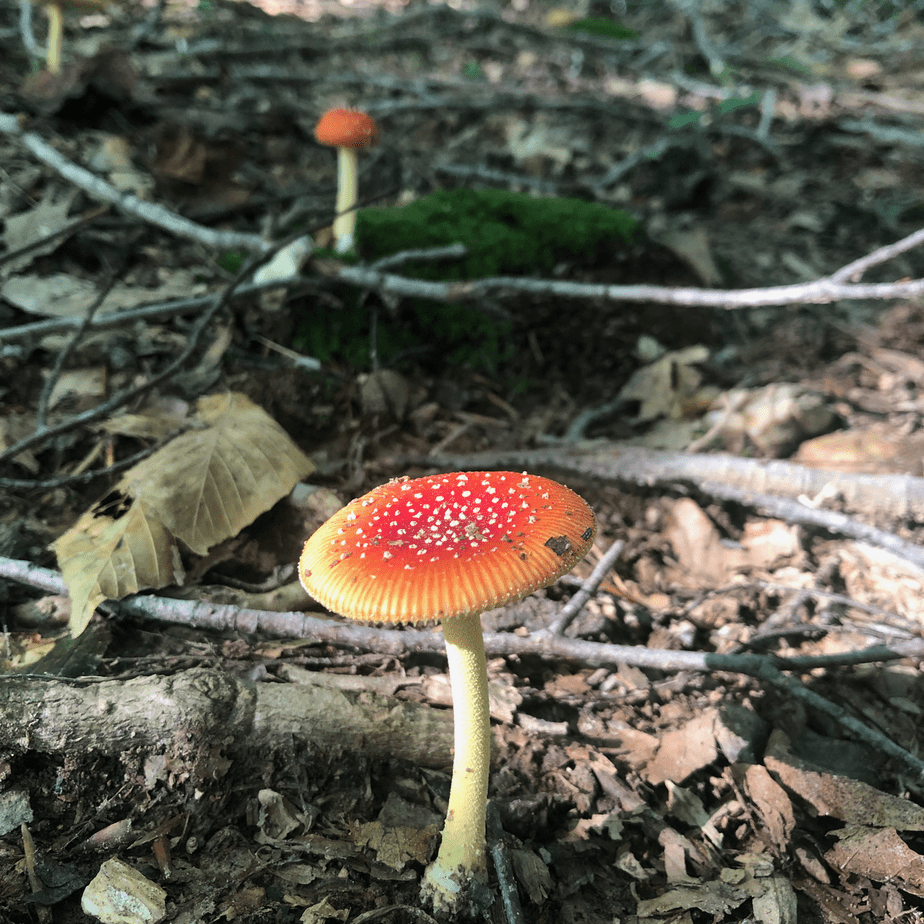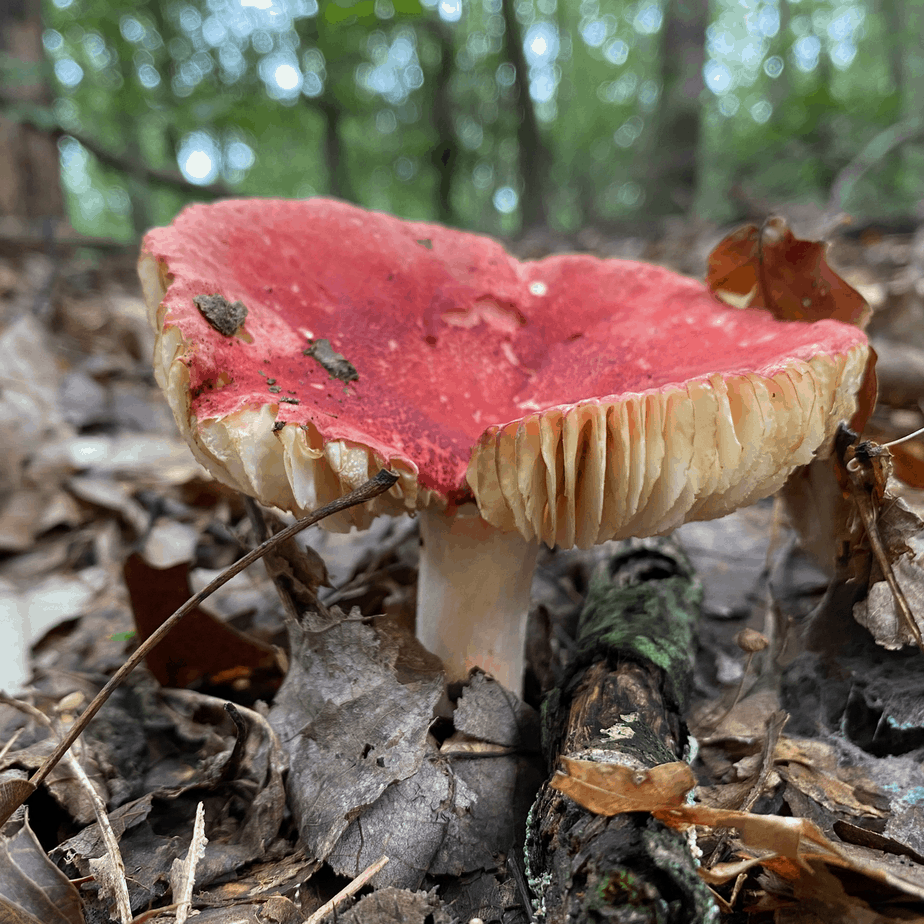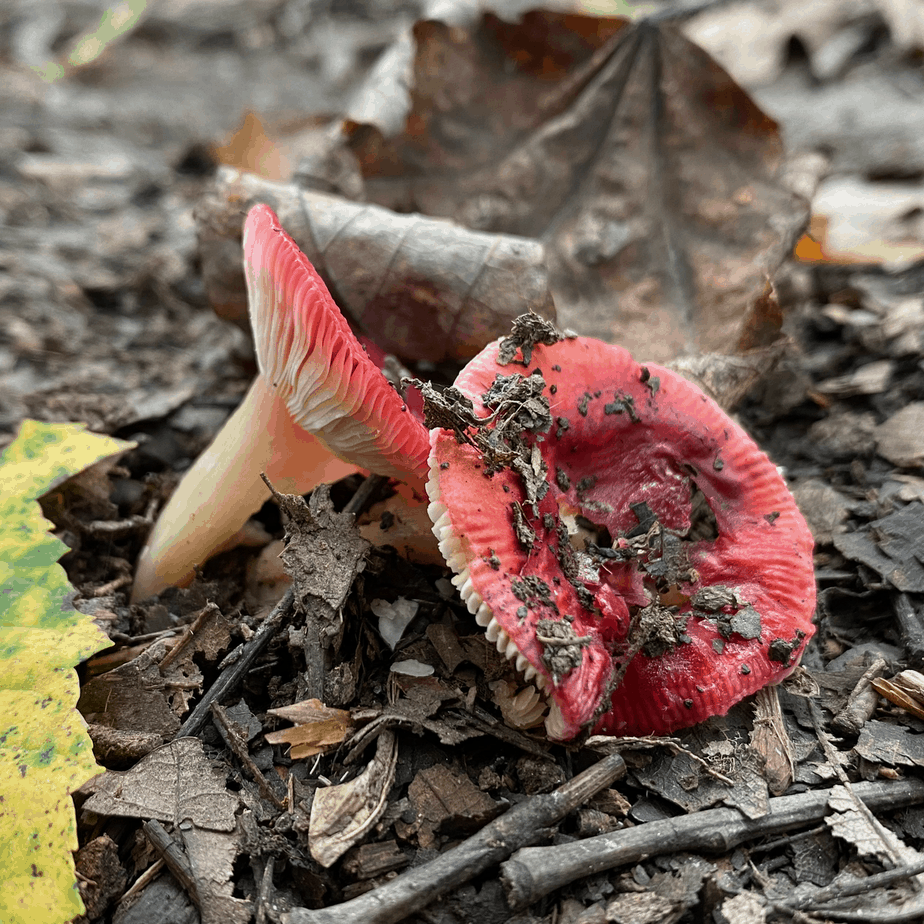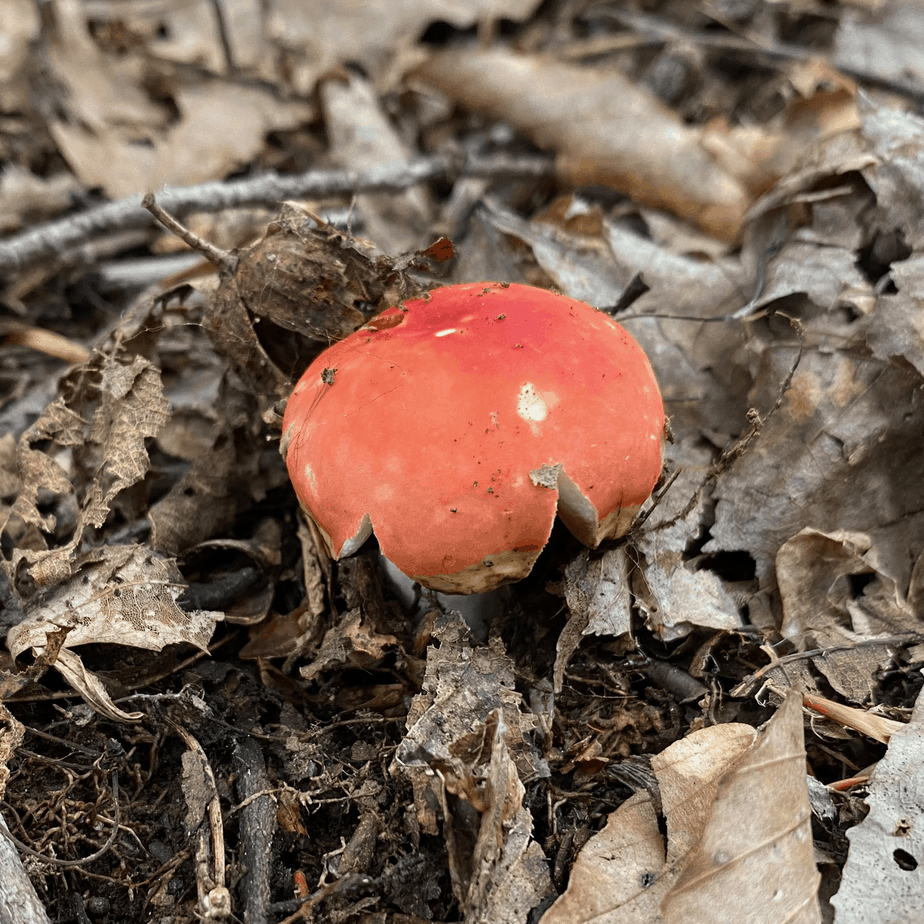We are finally getting some rain. After the rain, the fungi and mushrooms emerge. I love forest fungi. They are an amazing part of nature. Certainly I am not an expert on fungi. However, I think I found some Amanita muscaria var. flavivolvata. These are also called a fairy tail toadstool or Fly Agaric. They caught my attention because of their bright reddish orange color.
Characteristics of Amanita muscaria var. flavivolvata
Fungi are difficult to identify. It is a complicated group of organisms. I only look for fun. Here’s my attempt to identify the ones in the photos.
The cap color ranges from bright red to shades of orange.
There are usually warts on the top. Warts are yellow at first. They quickly fade to white in the sun. Rain can wash off the warts. As a result, this makes identification difficult.
There is a ring on the upper stem. Rings can be absent in mature specimens. Consequently, upper rings are not a good indicator.
The gills are white.
The base appears swollen. It has shaggy vertical fin type growths.
Toadstool - Changes with Age
These are sometimes referred to as toadstools. First, the cap emerges in a dome shape. Technically this is described as oval or round. Next, they flatten as they mature. Finally, they may indent in the center. The color also changes with age. So, bright red fades to pale orange or yellow. You can see a mature toadstool in the front of the photo. The one in the back is younger.
Weather Changes the Amanita muscaria var. flavivolvata
Amanita muscaria var. flavivolvata is Poisonous
Certainly, it is very difficult to correctly identify these fungi.
These toadstools are poisonous. Two of the toxic substances they contain are muscimol and ibotenic acid. Symptoms begin within 30 to 120 minutes after consumption. They include dizziness, confusion, sensitivity to visual and auditory stimuli, sleepiness, hallucinations and possible death. Therefore, these are very dangerous fungi. Mushroom identification is difficult. The pictures above could be Amanita muscaria var. flavivolvata. However, because they are old and weathered, it is impossible for an amateur to tell. Most importantly, never touch or consume any forest fungi unless you are an expert. Poisonous fungi can be fatal.
References:
First, the Mushroom Expert is a great resource.
Second, Science Direct describes the toxicity in great detail. This is a great read.
Finally the North Carolina Extension Gate Plant Toolbox is an excellent, easy to read resource.
